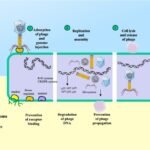
The global shrimp industry has faced a severe threat in recent years due to the outbreak of Acute Hepatopancreatic Necrosis Disease (AHPND). This devastating disease is caused by Vibrio parahaemolyticus and has led to significant losses in the aquaculture sector.
Conventional methods, such as antibiotics, have proven to be ineffective in controlling AHPND. In response to this challenge, a revolutionary approach known as phage therapy has emerged as a promising alternative for disease control.
A team of researchers from Chulalongkorn University, the Songkhla Aquatic Animal Health Research and Development Center (SAAHRDC), Mahidol University, the Prince of Songkla University, and the University of California San Diego identified 14 phages exhibiting diverse host specificity patterns against pathogenic VPAHPND strains.
The Ineffectiveness of Antibiotics
Antibiotics, once considered the ideal solution for controlling bacterial infections, have shown limited efficacy against AHPND and other bacteria.
The misuse and abuse of antibiotics in aquaculture have led to the rise of resistant strains and multi-antibiotic resistance in shrimp pathogens. Additionally, this resistance can be transferred to other bacterial species, including pathogens that affect humans.
This has driven the search for innovative and sustainable approaches to protect aquatic species and maintain the integrity of the aquaculture industry.
Phage Therapy: A New Hope
One of the most promising alternatives to antibiotics is bacteriophage therapy. Phages are viruses that infect specific bacteria, and their use offers several advantages, including self-dosing, biofilm penetration, and high specificity, preventing cross-infection.
Phage therapy provides a ray of hope in the battle against AHPND. It involves using naturally occurring viruses, known as bacteriophages, to target and eliminate specific bacterial pathogens. This precise and highly effective approach has the potential to revolutionize disease control in aquaculture.
Stay Always Informed
Join our communities to instantly receive the most important news, reports, and analysis from the aquaculture industry.
Studies have reported the isolation and extensive study of phages targeting various pathogenic vibrios, including V. harveyi, V. coralliilyticus, V. campbellii, V. anguillarum, V. alginolyticus, V. splendidus, V. cyclitrophicus, and V. parahaemolyticus.
High-Throughput Phage Detection
Researchers have embarked on a journey to find potent phages that can effectively combat AHPND. In an innovative study, they employed the Olsen phage isolation method with some modifications and used high-throughput detection techniques to search for potential phages in 98 seawater samples.
“Our method can be applied to isolate various phages from other environmental samples by adjusting host media, buffers, and incubation conditions,” the scientists report.
The results were impressive, as 14 phages were identified, each exhibiting diverse host specificity patterns against pathogenic VPAHPND strains.
Meet Eric and Ariel: Revolutionary Phages
Among the discovered phages, two members of the Chimallinviridae family, named Eric and Ariel, stood out.
These phages demonstrated an impressive host spectrum against vibrios, which are responsible for AHPND. This broad range of host specificities positions Eric and Ariel as potential heroes in the fight against AHPND.
In Vitro and In Vivo Success
Laboratory and field studies further validated the potential of phage therapy. In vitro experiments demonstrated that a phage cocktail derived from Eric and Ariel could inhibit the regrowth of various pathogenic VPAHPND strains.
Furthermore, in vivo trials revealed a significant reduction in shrimp mortality resulting from VPAHPND infection when this phage cocktail was applied.
Conclusion
The global aquaculture industry’s battle against AHPND has found new hope in phage therapy. With the discovery of phages like Eric and Ariel through high-throughput detection, we have taken a significant step toward combating this devastating disease.
The success of phage therapy in inhibiting bacterial regrowth and reducing shrimp mortality brings us closer to securing the future of aquaculture. As researchers continue to explore the potential of phage therapy, we can anticipate a more resilient and sustainable aquaculture industry.
“This research highlights the use of high-throughput phage detection leading to the formulation of a nucleus-forming phage cocktail applicable for bacterial infection treatment in aquaculture,” concluded the researchers.
Contact
Vorrapon Chaikeeratisak
Department of Biochemistry
Faculty of Science, Chulalongkorn University
Bangkok, Thailand
Email: vorrapon.c@chula.ac.th
Reference (Open Access)
Thammatinna, K., Sinprasertporn, A., Naknaen, A. et al. Nucleus-forming vibriophage cocktail reduces shrimp mortality in the presence of pathogenic bacteria. Sci Rep 13, 17844 (2023).
Editor at the digital magazine AquaHoy. He holds a degree in Aquaculture Biology from the National University of Santa (UNS) and a Master’s degree in Science and Innovation Management from the Polytechnic University of Valencia, with postgraduate diplomas in Business Innovation and Innovation Management. He possesses extensive experience in the aquaculture and fisheries sector, having led the Fisheries Innovation Unit of the National Program for Innovation in Fisheries and Aquaculture (PNIPA). He has served as a senior consultant in technology watch, an innovation project formulator and advisor, and a lecturer at UNS. He is a member of the Peruvian College of Biologists and was recognized by the World Aquaculture Society (WAS) in 2016 for his contribution to aquaculture.




